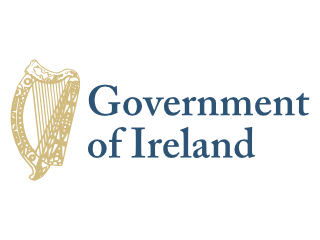Celtic tribes arrived on the island between 600 and 150 B.C. Invasions by Norsemen that began in the late 8th century were finally ended when King Brian BORU defeated the Danes in 1014. Norman invasions began in the 12th century and set off more than seven centuries of Anglo-Irish struggle marked by fierce rebellions and harsh repressions. The Irish famine of the mid-19th century saw the population of the island drop by one third through starvation and emigration. For more than a century after that the population of the island continued to fall only to begin growing again in the 1960s. Over the last 50 years, Ireland's high birthrate has made it demographically one of the youngest populations in the EU. The modern Irish state traces its origins to the failed 1916 Easter Monday Uprising that touched off several years of guerrilla warfare resulting in independence from the UK in 1921 for 26 southern counties; six northern (Ulster) counties remained part of the UK. Unresolved issues in Northern Ireland erupted into years of violence known as the "Troubles" that began in the 1960s. The Government of Ireland was part of a process along with the UK and US Governments that helped broker what is known as The Good Friday Agreement in Northern Ireland in 1998. This initiated a new phase of cooperation between the Irish and British Governments. Ireland was neutral in World War II and continues its policy of military neutrality. Ireland joined the European Community in 1973 and the euro-zone currency union in 1999. The economic boom years of the Celtic Tiger (1995-2007) saw rapid economic growth, which came to an abrupt end in 2008 with the meltdown of the Irish banking system. Today the economy is recovering, fueled by large and growing foreign direct investment, especially from US multi-nationals.
Ireland is a parliamentary republic.
Source: CIA World Factbook
Members:
Resources
Displaying 126 - 130 of 137European Communities (Environmental Impact Assessment) (Amendment) Regulations, 2001 (S.I. No. 538 of 2001).
The purpose of these Regulations is to facilitate compliance with the European Court of Justice ruling of 21 September 1999 (Case C-392/96) that the EIA thresholds adopted by Ireland in relation to initial afforestation and peat extraction exceeded the discretion available to Ireland under Directive 85/337/EEC on Environmental Impact Assessment in that they did not take account of the nature, location or cumulative effect of projects below these thresholds. The threshold for mandatory EIA in relation to these activities is reduced.
Waste Management (Use of Sewage Sludge in Agriculture) (Amendment) Regulations, 2001 (S.I. No. 267 of 2001).
These Regulations amend the Waste Management (Use of Sewage Sludge in Agriculture) Regulations, 1998 by replacing the two tonne per hectare per year limit on the amount of dry matter to be added to soil, with limits based on absolute quantities of specified heavy metals which may be introduced into soil per hectare per year subject to the carrying out of nutrient management plans.
Waste Management (Use of Sewage Sludge in Agriculture) Regulations, 1998 (S.I. No. 148/1998).
These Regulations prescribe standards for the use of sewage sludge in agriculture. The Regulations give effect to Council Directive 86/278/EEC of 12 June, 1986 on the protection of the environment, and in particular of the soil, when sewage sludge is used in agriculture.
Planning and Development (Regional Planning Guidelines) Regulations 2003 (S.I. No. 175 of 2003).
These Regulations set out a number of procedural requirements in relation to the preparation of regional planning guidelines by regional authorities. These procedural requirements supplement those already set out in the Planning and Development Act 2000. The Regulations also specify the National Spatial Strategy as being of relevance to the determination of strategic planning policies. This means that regional authorities must take account of the National Spatial Strategy when preparing and making regional planning guidelines.
Fisheries and Foreshore (Amendment) Act, 1998 (No. 56 of 1998).
The amendments of this Act to the Fisheries Acts, 1959 to 1997, the Foreshore Act, 1933, and the Fishery Harbour Centres Act, 1968 concern the granting of a foreshore licence for aquaculture purposes under the Act of 1933, or a fish culture licence under section 15 of Fisheries Acts, 1959 to 1997. These licences shall be deemed to an aquaculture licence granted under the Fisheries (Amendment) Act of 1997. Specific conditions are set out for the procedures of granting a foreshore licence deemed to be an aquaculture licence under the 1997 Act.


